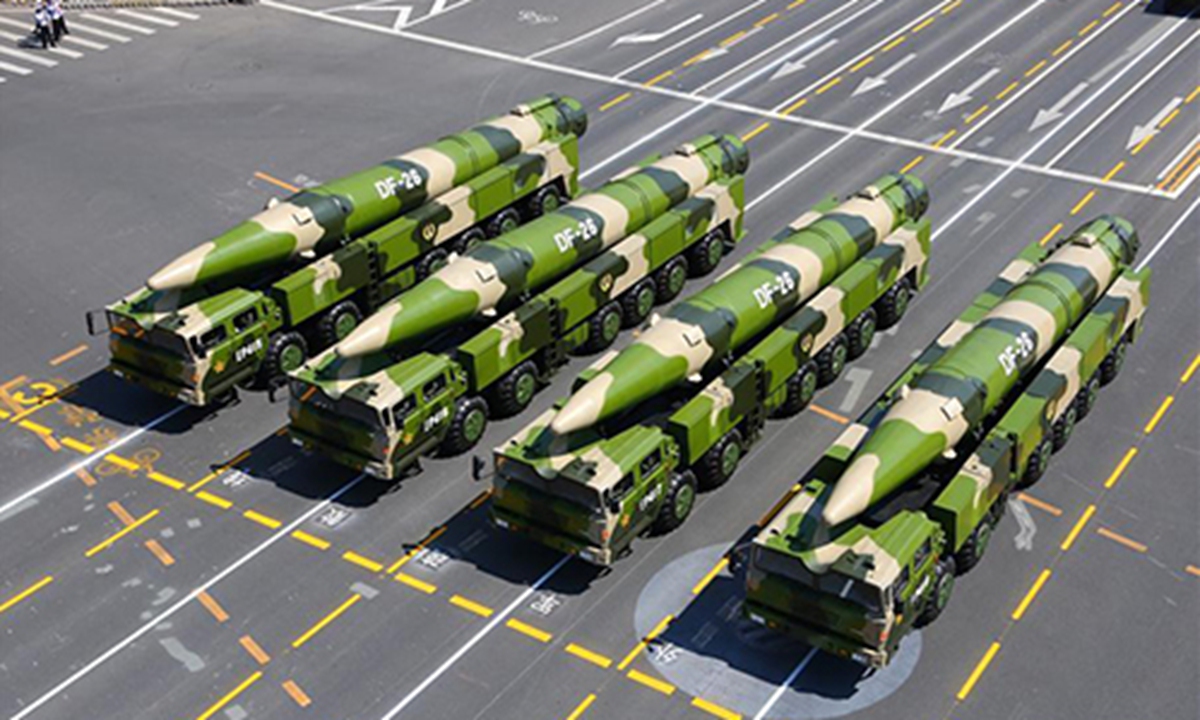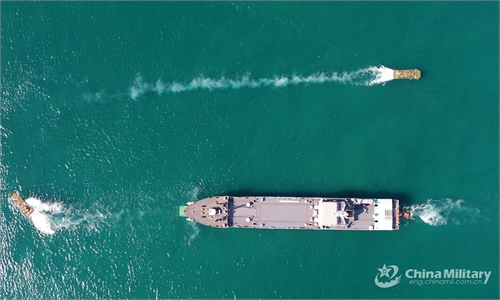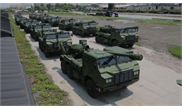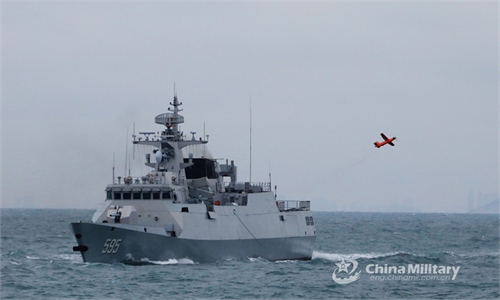
File photo taken on Sept. 3, 2015 shows DF-26 missiles attending a military parade in Beijing, capital of China. (Xinhua)
The Chinese People's Liberation Army (PLA) Rocket Force recently conducted a series of exercises with the "aircraft carrier killer" DF-26 ballistic missile at night, and while related techniques are challenging, they can bring many advantages on the battlefield, experts said on Wednesday.
A missile brigade affiliated with the PLA Rocket Force recently organized an exercise at midnight, featuring training courses like multi-wave mock fire strike and transferring and loading of missiles, China National Radio reported on Tuesday.
After launching a first wave of missile strikes, the troops received orders to relocate, reload and start a second wave of strikes. The drills also simulated a hostile attack on a launch position, and the troops had to maneuver to a backup launch location.
The missiles featured in the exercise were DF-26s, report footage shows.
Reloading requires troops to be accurate and shorten the time as much as possible despite low visibility at night to win more opportunities for succeeding maneuvers and fire strikes, as well as to increase survivability on the battlefield, Sergeant Deng Kuan, a missile loading operator at the brigade, was quoted as saying.
"We have been holding night exercises on a regular basis recently, which usually lasted past midnight. They featured the random changes of launch positions and targets, consecutive fire strikes and relocations," Colonel Jiang Feng, the deputy commander of the brigade, told China National Radio.
The exercise put the troops' operational skills to a test and honed their combat capability at night, the report said.
Night launches are more challenging than in the day due to lower visibility, and artificial light must be controlled to a low level in order not to expose the launch position, Fu Qianshao, a Chinese military aviation expert, told the Global Times on Wednesday.
It is particularly more challenging for the DF-26, which is designed to also attack moving targets including warships in addition to attacking stationary targets like normal ballistic missiles, Fu said, noting that it would take more advanced reconnaissance and tracking systems to detect a moving target at night and accurately guide the missile to it.
But challenges are the same from the receiving end, as it is also more difficult to intercept a missile and launch a counterattack at night, Fu said.
"Under complex battlefield situations, mastering more tactics and techniques means more chances to gain initiatives to win," Fu said.




